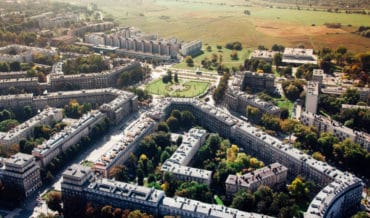The Tadeusz Sendzimir Steelworks, previously known as the Lenin Steelworks. It is located in the Nowa Huta district in Krakow. It is the second largest steel plant in Poland. The construction of the steelworks began in 1950. In 1953, the first cast iron was smelted there. In 1954, the first tapping of pig iron from blast furnace No. 1 took place and work began: power plant, agglomeration plant and coking plant. The metallurgical plant consisted of: open-hearth steel plant, blast furnaces, refractory materials plant, power plant, car body sheet rolling mill, hot sheet rolling mill, welded pipes department, galvanizing plant, agglomeration plant and coking plant. In later years, a converter steel plant and a slabing rolling mill were put into operation.
In the 1970s, Huta employed 40,000 people. people and produced approx. 6.7 million tons of steel per year.
At the beginning of the 90s, many departments harmful to the environment, such as the open-hearth steel plant and the agglomeration plant, were closed.
There are 2,000 metallurgical traditions in this area. years. The archaeological research carried out in parallel with the construction of the smelter led to the discovery of ancient smelting furnaces in which the bog ores were smelted.
